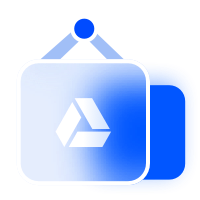cadence orcad capture 脚本
软件: cadence
Overview of Cadence OrCAD Capture Scripts
Cadence OrCAD Capture, a cornerstone tool for electronic design automation (EDA), supports TCL/TK scripting to automate repetitive tasks, enhance productivity, and reduce manual errors. Scripts can be integrated into the Capture menu, allowing engineers to execute complex operations with a single click or command. This capability is particularly valuable for large-scale designs where manual intervention would be time-consuming.
Key Script Types for Common Tasks
Batch Net Label Placement: A TCL script can automate the placement of bus net labels, eliminating the need to manually click and place each label. For example, a script might generate sequential or reverse-order net labels with customizable prefixes/suffixes for eMMC data pins, significantly speeding up bus labeling.

Net/Alias Replacement: Another critical script enables batch replacement of net names, Off-Page connectors, or Ports. This ensures consistency across the design (e.g., renaming "eMMC_DATA" to "EMMC_DATA") without manual errors. The script retains the window in focus across pages, supporting relative positioning and multiple replacement types.
Excel-Based Pin Editing: For bulk modifications to component pin names or numbers, a macro can read data from an Excel spreadsheet and apply it to the Capture design. The Excel file should include columns for component name, pin name, and pin number—enabling quick updates to pin configurations across multiple components.
Component Retrieval & Selection: TCL scripts can search for components by name or attributes using the SearchComponent function. For instance, a function that iterates through all components in a project and highlights those matching a given name helps engineers quickly locate specific parts in large designs.
Script Integration & Execution
To use TCL scripts in Capture, save them in the installation directory’s tclscripts folder (e.g., Cadence_SPB_16.6/tools/capture/tclscripts/capAutoLoad/). Use the source command to load the script into the Capture environment—for example, source "E:\Cadence\SPB_16.6\tools\capture\tclscripts\capAutoLoad\test.tcl". After loading, you can execute the script via a menu entry or by typing its associated command (e.g., qq) in the command line. Note that modifying a script requires reloading it (either by restarting Capture or re-running the source command) for changes to take effect.
Example Code Snippets
Batch Net Label Placement: A script might include a procedure to prompt users for a prefix, suffix, and bus range, then automatically place labeled nets on the selected page.
Excel Pin Editing: The UpdatePins macro uses CreateObject("Excel.Application") to open the spreadsheet, reads pin data row-by-row, and applies it to corresponding components in Capture.
Component Search: The SearchComponent function loops through all components in the project (Project.Components) and checks if the component name matches the input, providing a foundation for more complex search-and-modify operations.
These scripts address common pain points in Capture workflows, from net labeling to pin management, enabling engineers to focus on design innovation rather than repetitive tasks.
Cadence OrCAD Capture, a cornerstone tool for electronic design automation (EDA), supports TCL/TK scripting to automate repetitive tasks, enhance productivity, and reduce manual errors. Scripts can be integrated into the Capture menu, allowing engineers to execute complex operations with a single click or command. This capability is particularly valuable for large-scale designs where manual intervention would be time-consuming.
Key Script Types for Common Tasks
Batch Net Label Placement: A TCL script can automate the placement of bus net labels, eliminating the need to manually click and place each label. For example, a script might generate sequential or reverse-order net labels with customizable prefixes/suffixes for eMMC data pins, significantly speeding up bus labeling.

Net/Alias Replacement: Another critical script enables batch replacement of net names, Off-Page connectors, or Ports. This ensures consistency across the design (e.g., renaming "eMMC_DATA" to "EMMC_DATA") without manual errors. The script retains the window in focus across pages, supporting relative positioning and multiple replacement types.
Excel-Based Pin Editing: For bulk modifications to component pin names or numbers, a macro can read data from an Excel spreadsheet and apply it to the Capture design. The Excel file should include columns for component name, pin name, and pin number—enabling quick updates to pin configurations across multiple components.
Component Retrieval & Selection: TCL scripts can search for components by name or attributes using the SearchComponent function. For instance, a function that iterates through all components in a project and highlights those matching a given name helps engineers quickly locate specific parts in large designs.
Script Integration & Execution
To use TCL scripts in Capture, save them in the installation directory’s tclscripts folder (e.g., Cadence_SPB_16.6/tools/capture/tclscripts/capAutoLoad/). Use the source command to load the script into the Capture environment—for example, source "E:\Cadence\SPB_16.6\tools\capture\tclscripts\capAutoLoad\test.tcl". After loading, you can execute the script via a menu entry or by typing its associated command (e.g., qq) in the command line. Note that modifying a script requires reloading it (either by restarting Capture or re-running the source command) for changes to take effect.
Example Code Snippets
Batch Net Label Placement: A script might include a procedure to prompt users for a prefix, suffix, and bus range, then automatically place labeled nets on the selected page.
Excel Pin Editing: The UpdatePins macro uses CreateObject("Excel.Application") to open the spreadsheet, reads pin data row-by-row, and applies it to corresponding components in Capture.
Component Search: The SearchComponent function loops through all components in the project (Project.Components) and checks if the component name matches the input, providing a foundation for more complex search-and-modify operations.
These scripts address common pain points in Capture workflows, from net labeling to pin management, enabling engineers to focus on design innovation rather than repetitive tasks.











